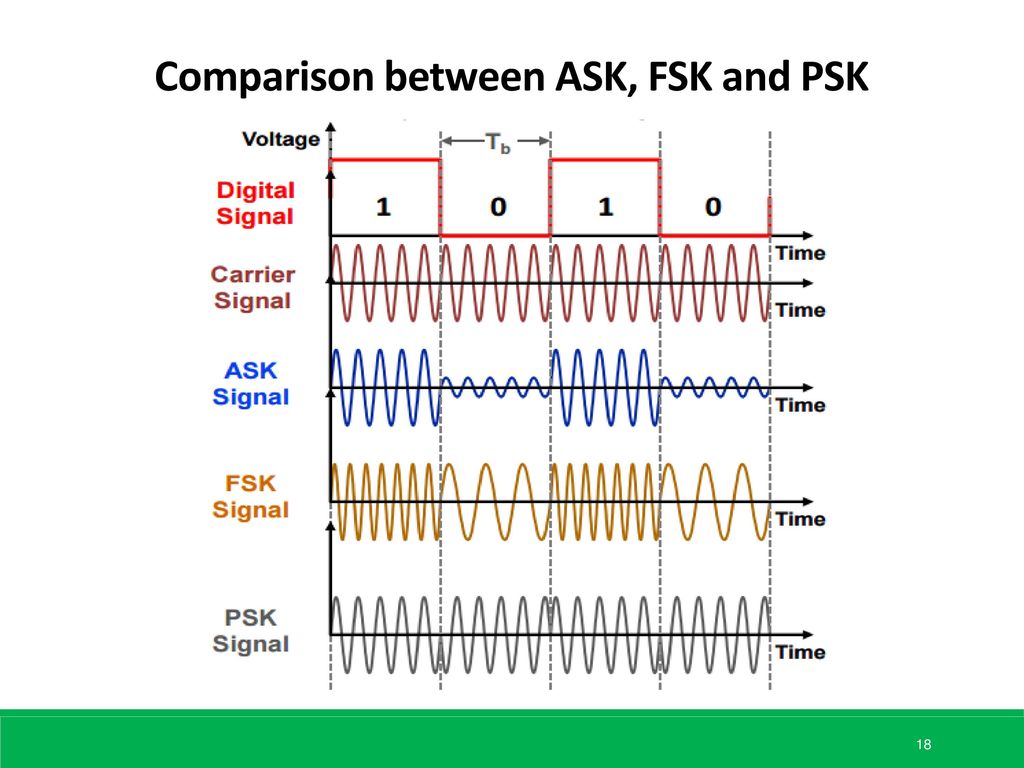

This image also shows the ASK waveform (modulated signal). Here in this image observe that we are going to modulate a sinusoidal carrier wave (shown in green color), with the digital input signal (0 1 1 0 0 1). Now let’s understand the concept of amplitude shift keying (ASK) with the help of an example. In amplitude modulation, the modulating signal is of analog kind but in digital modulation, it is a stream of digital bits.

The difference is only of the nature of the modulating signal. Therefore amplitude shift keying is analogous to Amplitude Modulation (analog modulation).ĪSK is analogous to AM, because in Amplitude Modulation (AM), amplitude of the carrier wave is changed according to the instantaneous value of the modulating (message) signal, in the same way in ASK also, the amplitude of the carrier wave is switched (varied) according to the instantaneous value of the modulating signal (digital input signal). In ASK, the amplitude of the carrier wave is changed (switched) according to the digital input signal (modulating signal). So now let’s discuss each digital modulation technique (ASK, FSK and PSK) in detail.

Here it is interesting to note that, the three forms of digital modulation techniques that is ASK, FSK and PSK are analogous to AM, FM and PM of continuous wave modulation respectively. In both of these modulation techniques, the carrier wave is of analog form. In continuous wave modulation, the message signal is of analog nature but in digital modulation, the message signal is of digital nature (Binary or M-ary encoded version). The basic difference between continuous wave Modulation and digital modulation techniques is based on the nature of message signal (modulating signal). So now let’s understand the basic difference between continuous wave modulation and digital modulation-ĭifference between Continuous Wave Modulation and Digital Modulation:Īmplitude Modulation (AM), Frequency Modulation (FM) and Phase Modulation (PM) are the examples of Continuous Wave (CW) modulation, while Amplitude Shift Keying (ASK), Frequency Shift Keying (FSK) and Phase Shift Keying (PSK) are examples of Digital Modulation Techniques. HDMI Encoder Modulator, 16in1 Digital Headend, HD RF Modulator at So if amplitude of the carrier wave is varied, then it is called as amplitude modulation, but if frequency or phase of the carrier wave is varied, according to the instantaneous value of the modulating signal, then it is known as frequency modulation or phase modulation respectively. Modulation is a process, where some characteristic of the carrier wave (amplitude, frequency or phase) is varied in accordance with the instantaneous value of the modulating (message or baseband) signal. So first of all let’s understand, what is modulation? In this post we will discuss three kinds of digital modulation techniques, Amplitude Shift Keying (ASK), Frequency Shift Keying (FSK) and Phase Shift Keying (PSK).


 0 kommentar(er)
0 kommentar(er)
